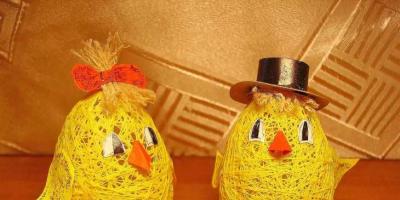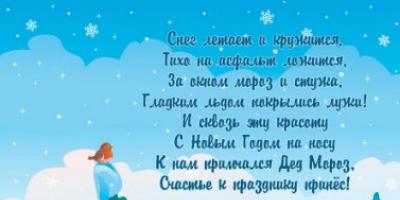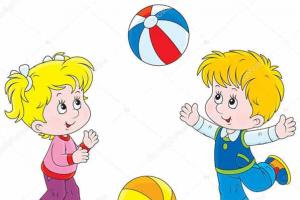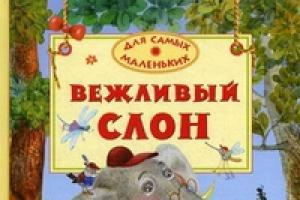Raise your bonfires, blue nights! Razima Anasovna Mineeva, primary school teacher at Municipal Budgetary Educational Institution “Secondary School No. 100 named after. S.E. Tsvetkova" Novokuznetsk

Slide 2
All-Union Pioneer Organization named after V.I. Lenin All-Union Pioneer Organization named after V.I. Lenin is a mass children's communist organization in the USSR. It was formed by the decision of the All-Russian Komsomol Conference on May 19, 1922, since then May 19 has been celebrated as Pioneer Day. Until 1924, the pioneer organization bore the name of Spartak, and after Lenin’s death it received his name.

Slide 3
On the Red Banner of the All-Union Pioneer Organization there are two Orders of Lenin and the Commemorative Ribbon of the Komsomol Central Committee. The first Order of Lenin All-Union Pioneer Organization named after. IN AND. Lenina was awarded on May 17, 1962 in connection with her 40th birthday for her great work in the communist education of children. The commemorative ribbon of the Komsomol Central Committee was presented to the pioneer organization on June 30, 1970 at the XVII All-Union Rally of Pioneers in Leningrad for successful work in preparation for the 100th anniversary of the birth of V.I. Lenin. The pioneer organization was awarded the second Order of Lenin on May 18, 1972 in connection with its 50th anniversary and for its great work in raising children in the spirit of Lenin’s precepts

Slide 4
The pioneer organization accepted schoolchildren aged 9 to 14 years. Those who joined the pioneer organization at the pioneer line made a solemn promise to be a pioneer of the Soviet Union. A communist, Komsomol member or senior pioneer presented him with a red pioneer tie and a pioneer badge. As a rule, pioneers were accepted into a solemn atmosphere during communist holidays in memorable historical and revolutionary places, for example on April 22 near the monument to V.I. Lenin.

Slide 5
Solemn promise of a pioneer “I, (last name, first name), joining the ranks of the All-Union Pioneer Organization named after Vladimir Ilyich Lenin, in the face of my comrades, I solemnly swear: to passionately love and take care of my Motherland, to live as the great Lenin bequeathed, as the Communist Party teaches, as required by the Laws of the Pioneers of the Soviet Union."

Slide 6
The laws of young pioneers read: A pioneer is devoted to the Motherland, the party, and communism. The pioneer is preparing to become a Komsomol member. The pioneer looks up to the heroes of struggle and labor. The pioneer honors the memory of the fallen fighters and prepares to become the defender of the Motherland. The pioneer is persistent in learning, work and sports. A pioneer is an honest and faithful comrade who always boldly stands for the truth. Pioneer - comrade and leader of the Octobrists. A pioneer is a friend to the pioneers and children of workers of all countries.

Slide 7
The anthem of the pioneer organization is considered to be the “March of Young Pioneers” - a Soviet pioneer song written in 1922 by two Komsomol members - pianist Sergei Kaidan-Deshkin and poet Alexander Zharov. Rise like fires, blue nights, We are pioneers - children of workers! The era of bright years is approaching, The cry of the pioneers is always be prepared! With a joyful step, with a cheerful song, We stand for the Komsomol, The era of bright years is approaching, The cry of the pioneers - always be ready! We raise the red banner, Children of workers - boldly follow us! The era of bright years is approaching, The cry of the pioneers is always be prepared! Rise like fires, blue nights, We are pioneers - children of workers! The era of bright years is approaching, The cry of the pioneers is always be prepared!

Slide 8
Pioneer symbols Pioneer gai lstuk - a red neck scarf tied in front with a special knot, a symbol of belonging to a pioneer organization, a symbolic piece of the banner of a pioneer organization. The three ends of the tie symbolize the unbreakable connection of three generations: communists, Komsomol members and pioneers. Pioneer ties were produced in various shades of red and from various fabrics. The most widespread production was of red-orange ties made of acetate silk. When unfolded, such a tie is an isosceles triangle with sides (approximately) 61×61×95 cm. How you tie your tie, take care of it!

Slide 9
Pioneer symbols The pioneer badge is a symbol of the pioneer organization in the USSR. Along with the pioneer tie, it was an indispensable attribute of the pioneer uniform, which meant that the student had been accepted into the pioneers. The design of the pioneer badge changed, reflecting the history of the country. In 1962, the pioneer organization was awarded the Order of Lenin. From then on, and probably until 1991, the badge was a red five-pointed star with an image of Vladimir Lenin in the center and the motto "Always Ready", with three flames above the star.

Slide 10
Pioneer attributes The most important pioneer attributes were the squad banner, squad flags, bugle and drum, which accompanied all the solemn pioneer rituals.

Slide 11
Each pioneer squad had a pioneer room where the corresponding attributes were stored and meetings of the squad council were held. In the pioneer room, as a rule, there was a ritual stand with pioneer attributes, a Lenin corner and a corner of international friendship

Slide 13
Resources used Presentation template http://vikafedotova38.ucoz.ru/load/shablony_prezentacij/raznoe/shablon_kinolenta/48-1-0-95 http://www.liveinternet.ru/users/raf-kettle1/rubric/1270722/ http ://ru.wikipedia.org/wiki/All-Union_pioneer_organization_named after_V._I._Lenin http:// belorschool.uoura.ru/index.php/respublika/detskie-organizatsii/pionery/121-simvolika-pionerskoj-organizat sii http:// zabinfo.ru/print.php?sid=66447 http://st.free-lance.ru/users/Serega-Chelem/upload/f_4990123face15.jpg http://fotki.yandex.ru/users/vasya-starik/ view/153997/?page=4 http://forum.omsk.com/viewtopic.php?t=227559&start=15&sid=http://school9shuya.narod.ru/history_school.html http://www.vladregion.info /node/1204 http://fotki.yandex.ru/users/oleg-filonok/view/354886/ http://technocosm.forumbb.ru/viewtopic.php?id=22 http://vtoraya-shkola.narod .ru/pioner.htm http://dad-n-kids.blogspot.com/2010/05/19.html http://sammler.ru/index.php?showtopic=23016 http://licey32.my1. ru/photo/1-0-13 http://detskijsad-shcool-vishnevo.narod.ru/O_shcole.htm http://fotki.yandex.ru/users/k-boniecki/view/218719/
Slide 2
April 22 – admission to the pioneers
Slide 3
“I, (last name, first name), joining the ranks of the All-Union Pioneer Organization named after Vladimir Ilyich Lenin, in the face of my comrades, solemnly swear: to passionately love my Motherland, to live, learn and fight, as the great Lenin bequeathed, as the Communist Party teaches, to always fulfill Laws of the pioneers of the Soviet Union"
Slide 4
Pioneer uniform
A school uniform, complemented by pioneer symbols - a red tie and a pioneer badge. A pioneer tie is a red neck scarf, tied in front with a special knot, a symbol of belonging to a pioneer organization, a symbolic piece of the banner of a pioneer organization.
Slide 5
Laws of Young Pioneers
Slide 6
The pioneer is devoted to the Motherland, the party, and communism. A pioneer is preparing to become a Komsomol member. The pioneer looks up to the heroes of struggle and labor. The pioneer honors the memory of the fallen fighters and prepares to become a defender of the Motherland. The pioneer is persistent in learning, work, and sports. A pioneer is an honest and faithful comrade who always boldly stands for the truth. Pioneer-comrade and leader of the Octobrists. Pioneer-friend to pioneers and children of workers of all countries.
Slide 7
The most important pioneer attributes
squad banner squad flags bugle drum
Slide 8
The most important pioneer attributes
squad banner, squad flags, bugle and drum, which accompanied all the solemn pioneer rituals. Each pioneer squad had a pioneer room where the corresponding attributes were stored and meetings of the squad council were held. In the pioneer room, as a rule, there was a ritual stand with pioneer attributes, a Lenin corner and a corner of international friendship. At school and in the classrooms, the pioneers published and hung handwritten squad and detachment wall newspapers
Slide 9
Pioneer room
Slide 10
Happy pioneer days
Slide 11
Pioneer Magazine
S. Ya. Marshak, A. P. Gaidar, L. A. Kassil, B. S. Zhitkov, K. G. Paustovsky, V. A. Kaverin, A. L. Barto, S. V. Mikhalkov, V. P. Krapivin,
Slide 12
Pioneer is a monthly literary, artistic and socio-political magazine of the All-Union Pioneer Organization named after V.I. Lenin for pioneers and schoolchildren. Founded in 1924, published in Moscow. The first issue was published on March 15, 1924 and was dedicated to V.I. Lenin. "Pioneer" had permanent sections on school and pioneer life, journalism, science and technology, art, sports, and children's artistic creativity.
Slide 13
"Pioneer Truth"
Founded in 1925 in Moscow and initially published as a weekly pioneer newspaper. Ideologically, “Pionerskaya Pravda,” according to its creators, was called upon “to help the pioneer organization and school in the communist education of the younger generation, while instilling in children the ideals of friendship, camaraderie, mutual assistance, love of the Motherland, kindness and justice.”
Slide 14
The history of the newspaper is the history of the country
Slide 15
The history of the newspaper is also the history of our country. The guys your peers read the first pages of “Pionerskaya Pravda” back in 1925. Much has changed during this time. The newspaper has become bright and colorful, and you have the opportunity to read it on the Internet. http://www.pionerka.su/
“Ivan Yakovlevich Yakovlev” - Monument to Yakovlev. What happened at the institute. Ivan Yakovlevich Yakovlev died in 1930. Childhood. Studies. A short conclusion: The first version of the Chuvash alphabet consisted of 47 letters. Ivan Yakovlevich Yakovlev. Alphabet. And at the same time, it seems. Yashtaikin Ilya Nikolaevich is a native of the village of Shumshevashi in the present Krasnochetaisky district.
"Pioneers" - History of the pioneer organization. The grand opening of the event dedicated to May 9. The best pioneers of the Yuvanov school Ivanova Svetlana Ryabinina Marina. The pioneer loves his Motherland, the Communist Party of the Soviet Union. Pioneer is friends with children from all over the world. “Pioneer, be ready to fight for the cause of the Communist Party of the Soviet Union!”
“Pioneerism” - Yura Sosnovsky Gena Shchukin Nikita Slepko Pavlik Morozov and others. Song about the first pioneer detachment. Victory Day! Zina Portnova. Valya Kotik. Victory Day. Arkady Golikov (Gaidar). Kolya Budanov Kychan Dzhakypov Grisha Hakobyan Nikita Senin Kolya Myagotin. Kolya Myagotin. Lenya Golikov. Get up, huge country! “There is silence on Mamayev Kurgan.”
“Dmitry Likhachev” - What is a letter? Genres of journalistic style. Essays. Irina Taimanova, Honored Artist. We must live our lives with dignity so that we are not ashamed to remember D.S. Likhachev. 2006 President of the Russian Federation V.V. Putin declared the Year of Likhachev. The name Likhachev was assigned to minor planet No. 2877 (1984).
“Lunacharsky” - Lunacharsky in his office. New post. Lunacharsky among workers and students. The People's Commissar of Education stands in front of the recording apparatus in the premises of Tsentropechat. Early years. Last years. Lunacharsky among the workers of the People's Commissariat of Education. Anatoly Vasilievich Lunacharsky 1875 - 1933.
"Snesarev" - Geostrategic concepts of Snesarev. Beginning of military service. The temptation was great to eliminate British world domination by striking India. Comparison of the geopolitical concepts of Milyutin and Snesarev. Generalization. In 1903, Snesarev published a solid two-volume work, “North Indian Theater”. Scientific works.
Creation of VPO named after V.I. Lenin
- · May 19, 1922, on the initiative of N.K. Krupskaya
- the decision of the 2nd All-Russian
- conference of the RKSM on the creation of a children's organization, “scouting in form and communist in content.”
- On May 23, 1924, she was named after the leader of the revolution - V.I. Lenin, and from 1926 to 1990 it was called the “All-Union Pioneer Organization named after V.I. Lenin"
- May 18, 1962 - awarded the Order
- Lenin - the highest state
- award in the USSR;
- May 17, 1972 – awarded second
- Order of Lenin.
- Pioneers help in harvesting.
- Helping the country in the fight against hunger,
- pioneers sowed even in urban areas
- in squares there are special beds, strips,
- on which vegetables were grown.
- Combating homelessness;
- Work to eliminate illiteracy in the country. By 1930, young teachers taught over one million people to read and write.
- International work.
- Friendship with the Red Army.
- Meetings with soldiers, concerts for them,
- war games and hikes, special
- weeks of “bond” with the Red Army,
- fundraising for construction
- pioneer aircraft.
- In the spring of 1923, groups of younger children—Octobers—began to appear under the pioneer detachments.
- Community clean-up work
- premises and territories, in the simplest
- production operations, conversations about the first five-year plans.
- By July 1930, over 1 million illiterate people were taught to read and write, 20 thousand radios and 500 thousand books were sent to villages, industrialization loan bonds worth 1,500 thousand rubles were distributed, and 4,500 tractors were purchased for collective farms using funds earned by pioneers.
- In June 1932, help
- in village radio provision.
- Library relay race
- progress of pioneers,
- competition for the most competent squad,
- various educational games.
- All-Union expeditions:
- -I All-Union Pioneer Camel Expedition in Kazakhstan and II Expedition on Horses and Carts in the North Caucasus in 1932;
- -III expedition on boats along the Volga from Yaroslavl to Kostroma in 1933; -IV walking expedition in Altai in the summer of 1934;
- -V expedition was again
- sent to Kazakhstan
- in 1935;
- - children's geological exploration
- expedition to the Urals in 1933,
- - boat trip along the route
- Moscow - Saratov in 1936, etc.
- The best of young workers
- were awarded by the Motherland.
- By decree of the Presidium of the Supreme Soviet of the USSR they were awarded: - the Order of Lenin - Mamlakat Nakhangova(exceeded the cotton harvest quota by seven times);
- - Order of the Badge of Honor - Ishan Kadyrov and Khavakhan Atakulova, Alyosha Fadeev from the Leningrad region, Barasbi Khamgokov from the Kabardian Autonomous Region, Kolya Kuzmin from the Kalinin region, Vanya Chulkov from the Moscow region, Mamed Hasanov from Dagestan, Vasya Voznyuk from Ukraine, Buza Shamzhanov from Kazakhstan, Eteri Gvintseladze from Georgia.
- In the early 30s, in many pioneer organizations
- countries, pioneer regiments and battalions are created,
- who made long trips to the battlefields
- civil war. In the mid-30s among
- pioneers, a movement for the possession of
- defense badges BGTO, BGSO, “Be ready for PVE”,
- “Young Voroshilov shooter”, “Young horseman”, “Young sailor”, etc. War games were held in which pioneers mastered military specialties.
- 1940 A.P. Gaidar’s book “Timur and His Team” was published, which marked the beginning of the Timur movement.
- Timur movement: concerns about organizing the life of the families of soldiers who fought at the front; work in hospitals (helping orderlies, cooks in the kitchen, reading letters and newspapers to the wounded, amateur art concerts.
- Fulfillment of military orders: tobacco pouches and pillowcases, socks and mittens, warm clothes as gifts for soldiers.
- Tank columns and
- individual combat vehicles
- were built with funds
- collected by the pioneers:
- "Pioneer of Bashkiria"
- "Pioneer" (Gorky region),
- "Moscow Pioneer"
- "Tanya" (Novosibirsk), "Young Pioneer"
- (Kuibyshev), “Schoolboy of Sverdlovsk”,
- “Tashkent Pioneer”, “Pioneers of Rostov”.
- Pioneer squadrons fought in the skies of the Motherland: “Arzamas Schoolboy”, “Pioneer of Dagestan”, “Young Fighter”, “Yaroslavl Pioneer”, “Taganrog Pioneers”, “Karelian Pioneer”, “Pioneer of Siberia”, “Pioneer of the Komi ASSR”, “Pioneer” Uzbekistan" and others.
- 186 thousand tons of medicinal plants for the pharmaceutical industry
- collected by the pioneers in 1942-1944.
- During the war years the pioneers were
- produced on collective farm fields
- 588600 thousand workdays.
- For their work in the home front, many pioneers and schoolchildren were awarded government awards. About 20 thousand pioneers of the capital were awarded the medal “For the Defense of Moscow”, 15,249 young Leninists were awarded the medal “For the Defense of Leningrad”.
- Thousands of children left with their parents
- to partisan detachments, where they
- became orderlies and messengers,
- scouts and participants in combat operations.
- Many sons of the regiment participated and
- in combat battles of the active army.
- During the Great Patriotic War, pioneers sought to help adults in every way in the fight against the enemy both in the rear and at the front, in partisan detachments and in the underground. The pioneers became scouts, partisans, cabin boys on warships, and helped shelter the wounded. For their military services, tens of thousands of pioneers were awarded orders and medals, four were posthumously awarded the title of Hero of the Soviet Union - Lenya Golikov, Zina Portnova, Marat Kazei and Valya Kotik.
- Valya Kotik
- Marat Kazei
- Zina Portnova
- Lenya Golikov
- After the end of the Great Patriotic War, the pioneers were engaged in: in the city - collecting waste paper and scrap metal, planting green spaces, in rural areas - raising small domestic animals (rabbits, birds). In the Central Asian republics, pioneers grew cotton.
- Pioneers Tursunali Matkazinov and Natalie Chelebadze in 1949 were awarded the title of Hero of Socialist Labor and awarded the Gold Star medal and the Order of Lenin.
- In 1990, at the X All-Union rally
- in Artek All-Union Pioneer
- organization named after Lenin was
- transformed into an international Union
- pioneer organizations - Federation
- children's organizations (SPO-FDO).
- People were accepted into the pioneer organization
- schoolchildren aged 9 to 14 years,
- individually, by open voting
- at the meeting of the pioneer detachment. Entering
- to the Pioneer organization on Pioneer
- gave the ruler Solemn promise
- pioneer of the Soviet Union, his counselors
- tied red pioneer tie And
- handed over pioneer badge.
- A pioneer - a young builder of communism - works and studies for the good of the Motherland, preparing to become its defender.
- A pioneer is an active fighter for peace, a friend to pioneers and the children of workers of all countries.
- The pioneer looks up to the communists, prepares to become a Komsomol member, and leads the Octobrists.
- A pioneer values the honor of his organization and strengthens its authority through his deeds and actions.
- A pioneer is a reliable comrade, respects elders, takes care of younger ones, and always acts according to his conscience.
- A pioneer has the right to: elect and be elected to pioneer self-government bodies; discuss at pioneer gatherings, rallies, meetings of councils of detachments and squads, in the press, the work of the pioneer organization, criticize shortcomings, make proposals to any council of the pioneer organization, up to the Central Council of the Higher Professional Education named after V.I. Lenin; ask for a recommendation from the squad council to join the ranks of the Komsomol.
- The anthem of the pioneer organization is considered to be “March of Young Pioneers” - a Soviet pioneer song written in 1922 by two Komsomol members - pianist Sergei Kaidan-Deshkin and poet Alexander Zharov:
- With a joyful step, with a cheerful song, We stand for the Komsomol, The era of bright years is approaching, The cry of the pioneers - always be ready!
- We raise the red banner, Children of workers - boldly follow us! The era of bright years is approaching, The cry of the pioneers is always be prepared!
- Rise like fires, blue nights, We are Pioneers - children of workers! The era of bright years is approaching, The cry of the pioneers is always be prepared!
- The motto of the pioneers: to the call: “Pioneer, to fight for the cause of the Communist Party of the Soviet Union be ready! - followed the answer: "Always ready!"
- Pioneer tie–
- triangular
- red canvas
- Pioneer badge.
- Pioneer salute
- (welcome
- raising right hand)
- Red Banner (or
- squad flag);
- Drum; Horn;
- Pioneer uniform.
- On December 15, 1922, the first pioneer newspaper “Young Spartak” was published.
- 1923 March. The first pioneer magazine “Drum” was published.
- On March 6, 1925, the newspaper “Pionerskaya Pravda” was published.
- 1924 April. The first issue of the Pioneer magazine has been published.
- The vast majority of pioneers spent their school holidays in pioneer camps. In the USSR, there were up to 40 thousand summer and year-round pioneer camps, where about 10 million children vacationed annually.
- The most famous of them was
- All-Union Pioneer Camp
- Central Committee of the Komsomol "Artek"
- (opened in 1925),
- had international status.
- The second place was taken
- All-Russian Pioneer
- camp "Eaglet"
- (Krasnodar region, RSFSR)
- (opened 1957).
- Next came the republican recreation camps "Ocean"
- (Primorsky Territory, RSFSR),
- "Young Guard" (Ukrainian SSR)
- and “Zubrenok” (BSSR).
"Firework,
Pioneer!”


- March 1926 - The pioneer organization began to be called - All-Union Pioneer Organization named after V.I. Lenin. Until 1924, the pioneer organization bore the name of Spartak, and after Lenin’s death it received his name

Symbols pioneer organization
- pioneer banner;
- squad flag;
- pioneer tie and badge;
- bugle, drum

Pioneer Banner
- Pioneer Banner - a red banner on which the pioneer badge and the motto “Be ready to fight for the cause of the Communist Party of the Soviet Union!” are depicted. Two Orders of Lenin were pinned to the main banner of the All-Union Pioneer Organization.
Red flag – this is also a reminder of the shed blood of the pioneers themselves. The red banner is a banner the color of a blazing fire.

- On ordinary days, the pioneer uniform coincided with the school uniform, complemented by pioneer symbols - a red tie and a pioneer badge. On special occasions (holidays, greetings at party and Komsomol forums, meetings of foreign delegations, etc.) dress uniforms were worn. They proudly wore a red tie on their chest - a piece of the red battle flag. At the pioneer's tie three ends are a symbol of the unity of the party, Komsomol and pioneers.

Pioneer badge
- Pioneer badge had the shape of a five-pointed star, in the center of which is Lenin’s profile, below it the motto “Always ready!”, above the star there are three tongues of flame .

- Horn convenes the pioneers. His signals accompany rituals. The troop's bugler is a responsible pioneer assignment. The bugler must be able to perform drill techniques with a bugle and give signals: “Listen, everyone,” “Gathering,” “To the banner,” “March,” “To the line,” “Alarm,” and some others.

- Purpose of the drum - accompany the formation during campaigns, processions, and parades. The drummer of the detachment must be able to perform drill techniques, perform “March”, “Rot”.

- Greeting the pioneers - fireworks. When giving a salute, the pioneer raises his right arm, bent at the elbow, in front of him, so that his arm is slightly above his head. A palm raised above the forehead meant that the pioneer’s public interests were higher than his personal ones.
- The salute is given only if the pioneer is wearing a tie.

Pioneer motto
- On call:
“Pioneer, be ready to fight for the cause of the Communist Party of the Soviet Union!”
- - the answer follows:
"Always ready!"

Procedure for admission to the pioneer organization
- The pioneer organization accepted schoolchildren aged 9 to 14 years. Admission was carried out individually, by open voting at a meeting of the pioneer detachment or squad.
- Those who joined the pioneer organization at the pioneer line made a solemn promise to be a pioneer of the Soviet Union. Pioneers were received in a solemn atmosphere. As a rule, during communist holidays, most often on April 22 near the monument to V.I. Lenin.

Oath
- Solemn promise of the pioneer of the Soviet Union:
I, (last name, first name), joining the ranks of the All-Union Pioneer Organization named after Vladimir Ilyich Lenin, in the face of my comrades, solemnly promise: to passionately love and take care of my Motherland, to live as the great Lenin bequeathed, as the Communist Party teaches, as required by the Laws of the Soviet Pioneers Union".

Laws of the pioneers of the Soviet Union:
- Pioneer devoted to the Motherland, the party, communism.
- Pioneer preparing to become a Komsomol member.
- Pioneer looks up to the heroes of struggle and labor.
- Pioneer honors the memory of fallen fighters and prepares to become a defender of the Fatherland.
- Pioneer best in studies, work and sports.
- Pioneer - an honest and loyal comrade, always boldly standing for the truth.
- Pioneer - comrade and leader of the October.
- Pioneer - a friend to the pioneers and children of workers of all countries.

- In 1991, the pioneer organization, like the Komsomol, ended its existence. At first, attempts were made to reform it, but it was not possible to create a children's and youth organization on the same scale. Many other public organizations appeared - successors to the pioneer one, formed with the participation of children and in their interests.
- The new Union of Pioneer Organizations appeared in 1992 as a non-governmental public organization, independent of political parties and movements. International Union of Children's Public Associations "SPO-FDO"
- Today the motto of the pioneers is: "For the Motherland, goodness and justice."

Pioneer – it's a bright tomorrow.
Pioneer – This is sunrise.
Pioneer – this is loyalty and brotherhood.
Pioneer – these are flights of thoughts.








